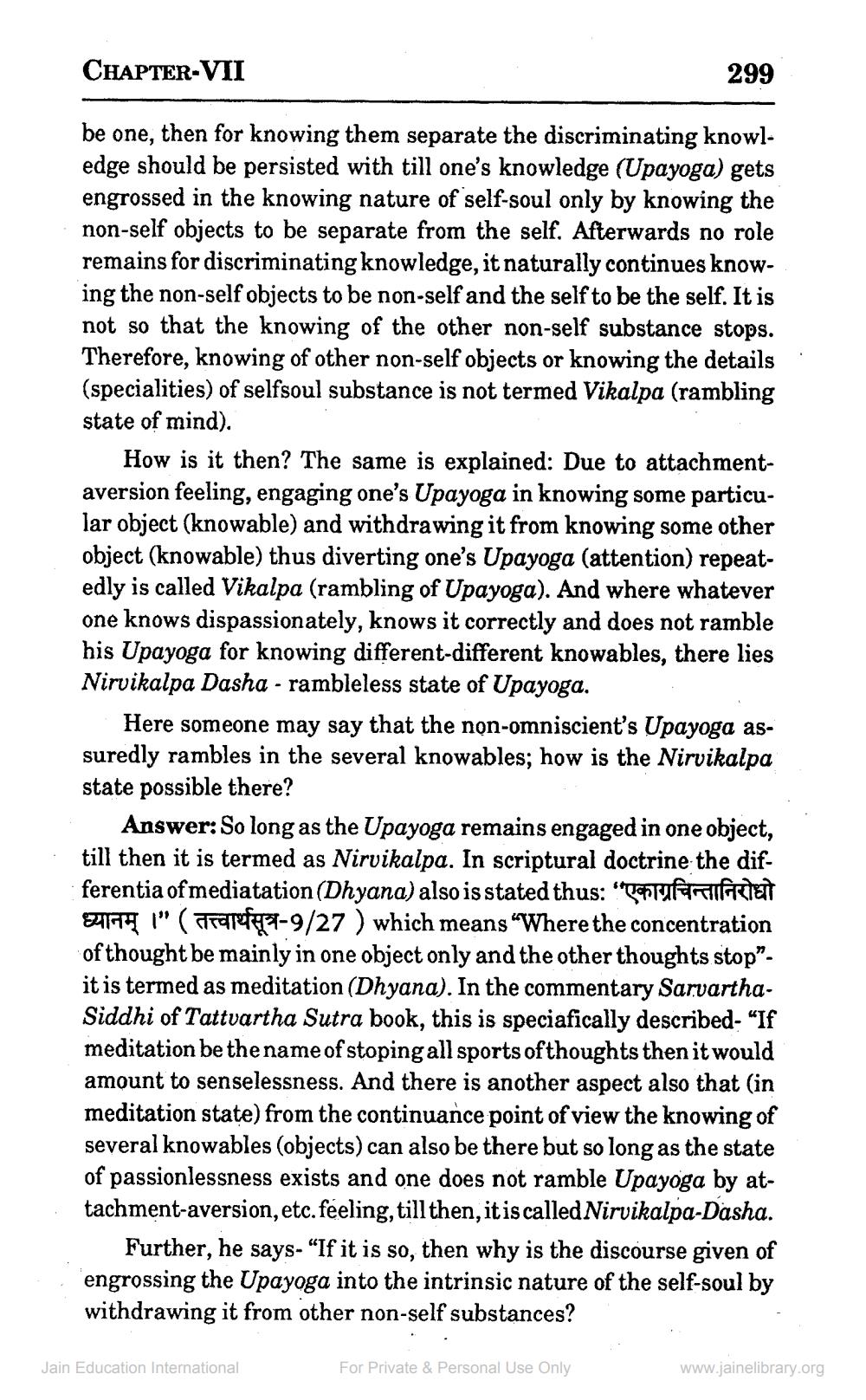________________
CHAPTER-VII
299
be one, then for knowing them separate the discriminating knowledge should be persisted with till one's knowledge (Upayoga) gets engrossed in the knowing nature of self-soul only by knowing the non-self objects to be separate from the self. Afterwards no role remains for discriminating knowledge, it naturally continues knowing the non-self objects to be non-self and the self to be the self. It is not so that the knowing of the other non-self substance stops. Therefore, knowing of other non-self objects or knowing the details (specialities) of selfsoul substance is not termed Vikalpa (rambling state of mind).
How is it then? The same is explained: Due to attachmentaversion feeling, engaging one's Upayoga in knowing some particular object (knowable) and withdrawing it from knowing some other object (knowable) thus diverting one's Upayoga (attention) repeatedly is called Vikalpa (rambling of Upayoga). And where whatever one knows dispassionately, knows it correctly and does not ramble his Upayoga for knowing different-different knowables, there lies Nirvikalpa Dasha - rambleless state of Upayoga.
Here someone may say that the non-omniscient's Upayoga assuredly rambles in the several knowables; how is the Nirvikalpa state possible there?
Answer: So long as the Upayoga remains engaged in one object, till then it is termed as Nirvikalpa. In scriptural doctrine the differentia of mediatation (Dhyana) also is stated thus: familTETT 2194I" ( Prart9-9/27 ) which means "Where the concentration of thought be mainly in one object only and the other thoughts stop”it is termed as meditation (Dhyana). In the commentary SarvarthaSiddhi of Tattvartha Sutra book, this is speciafically described- "If meditation be the name of stoping all sports of thoughts then it would amount to senselessness. And there is another aspect also that (in meditation state) from the continuance point of view the knowing of several knowables (objects) can also be there but so long as the state of passionlessness exists and one does not ramble Upayoga by attachment-aversion, etc. feeling, till then, it is called Nirvikalpa-Dasha.
Further, he says-“If it is so, then why is the discourse given of engrossing the Upayoga into the intrinsic nature of the self-soul by withdrawing it from other non-self substances?
Jain Education International
For Private & Personal Use Only
www.jainelibrary.org




